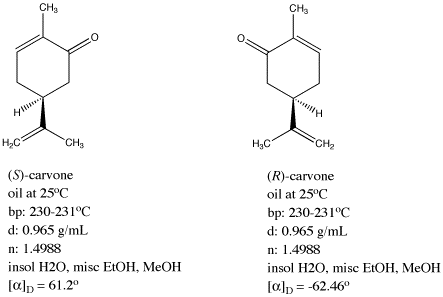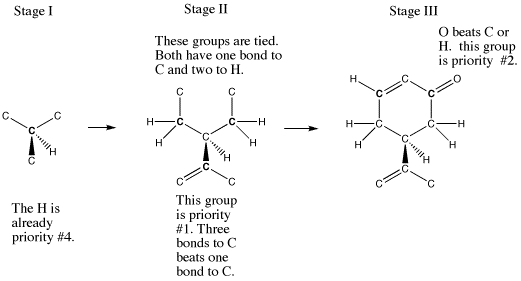

علم الكيمياء

تاريخ الكيمياء والعلماء المشاهير

التحاضير والتجارب الكيميائية

المخاطر والوقاية في الكيمياء

اخرى

مقالات متنوعة في علم الكيمياء

كيمياء عامة


الكيمياء التحليلية

مواضيع عامة في الكيمياء التحليلية

التحليل النوعي والكمي

التحليل الآلي (الطيفي)

طرق الفصل والتنقية


الكيمياء الحياتية

مواضيع عامة في الكيمياء الحياتية

الكاربوهيدرات

الاحماض الامينية والبروتينات

الانزيمات

الدهون

الاحماض النووية

الفيتامينات والمرافقات الانزيمية

الهرمونات


الكيمياء العضوية

مواضيع عامة في الكيمياء العضوية

الهايدروكاربونات

المركبات الوسطية وميكانيكيات التفاعلات العضوية

التشخيص العضوي

تجارب وتفاعلات في الكيمياء العضوية


الكيمياء الفيزيائية

مواضيع عامة في الكيمياء الفيزيائية

الكيمياء الحرارية

حركية التفاعلات الكيميائية

الكيمياء الكهربائية


الكيمياء اللاعضوية

مواضيع عامة في الكيمياء اللاعضوية

الجدول الدوري وخواص العناصر

نظريات التآصر الكيميائي

كيمياء العناصر الانتقالية ومركباتها المعقدة


مواضيع اخرى في الكيمياء

كيمياء النانو

الكيمياء السريرية

الكيمياء الطبية والدوائية

كيمياء الاغذية والنواتج الطبيعية

الكيمياء الجنائية


الكيمياء الصناعية

البترو كيمياويات

الكيمياء الخضراء

كيمياء البيئة

كيمياء البوليمرات

مواضيع عامة في الكيمياء الصناعية

الكيمياء الاشعاعية والنووية
Some Chiral Organic Molecules
المؤلف:
..................
المصدر:
LibreTexts Project
الجزء والصفحة:
.................
8-7-2019
2948
Some Chiral Organic Molecules
There are a number of important biomolecules that could occur as enantiomers, including amino acids and sugars. In most cases, only one enantiomer occurs (although some fungi, for example, are able to produce mirror-image forms of these compounds). We will look later at some of these biomolecules, but first we will look at a compound that occurs naturally in both enantiomeric forms.
Carvone is a secondary metabolite. That means it is a naturally-occurring compound that is not directly connected to the very basic functions of a cell, such as self-replication or the production of energy. The role of secondary metabolites in nature is often difficult to determine. However, these compounds often play roles in self-defense, acting as deterrents against competitor species in a sort of small-scale chemical warfare scenario. They are also frequently used in communications; this role has been studied most extensively among insects, which use lots of compounds to send information to each other.

Figure 1.1: The two naturally-occurring enantiomers of carvone.
Carvone is produced in two enantiomeric forms. One of these forms, called (-)-carvone, is found in mint leaves, and it is a principal contributor to the distinctive odor of mint. The other form, (+)-carvone, is found in caraway seeds. This form has a very different smell, and is typically used to flavor rye bread and other Eastern European foods.
Note that (+)-carvone is the same thing as (S)-carvone. The (+) designation is based on its positive optical rotation value, which is experimentally measured. The (S) designation is determined by the Cahn-Ingold-Prelog rules for designating stereochemistry, which deal with looking at the groups attached to a chiral center and assigning priority based on atomic number. However, carvone's chiral center actually has three carbons attached to it; they all have the same atomic number. We need a new rule to break the tie.
- If two substituent groups have the same atomic number, go one bond further to the next atom.
- If there is a difference among the second tier of atoms, stop.
- The group in which you have encountered a higher atomic number gets the highest priority.
- If there is not a clear difference, proceed one additional bond to the next set of atoms, and so on, until you find a difference.
In carvone, this decision tree works as follows:
- The chiral center is connected to a H, a C, a C and a C.
- The H is lowest priority.
- One C eventually leads to a C=O. However, at the second bond from the chiral center, this C is connected to a C and two H's.
- A second C is also part of the six-membered ring, but the C=O is farther away in this direction. At the second bond from the chiral center, this C is connected to a C and two H's, just like the first one.
- The third C is part of a little three-carbon group attached to the six-membered ring. At the second bond from the chiral center, it is connected to only one H and has two bonds to another C (this is counted as two bonds to C and one to H).
- Those first two carbon groups are identical so far.
- However, the third group is different; it has an extra bond to C, whereas the others have an extra bond to H. C has a higher atomic number than H, so this group has higher priority.
- The second-highest priority is the branch that reaches the oxygen at the third bond from the chiral center.

Figure 1.2: Comparing atoms step-by-step to assign configuration.
How different, exactly, are these two compounds, (+)- and (-)-carvone? Are they completely different isomers, with different physical properties? In most ways, the answer is no. These two compounds have the same appearance (colorless oil), the same boiling point (230 °C), the same refractive index (1.499) and specific gravity (0.965). However, they have optical rotations that are almost exactly opposite values.
- Two enantiomers have the same physical properties.
- Enantiomers have opposite optical rotations.
Clearly they have different biological properties; since they have slightly different odors, they must fit into slightly different nasal receptors, signaling to the brain whether the person next to you is chewing a stick of gum or a piece of rye bread. This different shape complimentarity is not surprising, just as it isn't surprising that a left hand only fits into a left handed baseball glove and not into a right handed one.

Figure 1.3: Thalidomide.
There are other reasons that we might concern ourselves with an understanding of enantiomers, apart from dietary and olfactory preferences. Perhaps the most dramatic example of the importance of enantiomers can be found in the case of thalidomide. Thalidomide was a drug commonly prescribed during the 1950's and 1960's in order to alleviate nausea and other symptoms of morning sickness. In fact, only one enantiomer of thalidomide had any therapeutic effect in this regard. The other enantiomer, apart from being therapeutically useless in this application, was subsequently found to be a teratogen, meaning it produces pronounced birth defects. This was obviously not a good thing to prescribe to pregnant women. Workers in the pharmaceutical industry are now much more aware of these kinds of consequences, although of course not all problems with drugs go undetected even through the extensive clinical trials required in the United States. Since the era of thalidomide, however, a tremendous amount of research in the field of synthetic organic chemistry has been devoted to methods of producing only one enantiomer of a useful compound and not the other. This effort probably represents the single biggest aim of synthetic organic chemistry through the last quarter century.
- Enantiomers may have very different biological properties.
- Obtaining enantiomerically pure compounds is very important in medicine and the pharmaceutical industry.
 الاكثر قراءة في مواضيع عامة في الكيمياء العضوية
الاكثر قراءة في مواضيع عامة في الكيمياء العضوية
 اخر الاخبار
اخر الاخبار
اخبار العتبة العباسية المقدسة

الآخبار الصحية















 قسم الشؤون الفكرية يصدر كتاباً يوثق تاريخ السدانة في العتبة العباسية المقدسة
قسم الشؤون الفكرية يصدر كتاباً يوثق تاريخ السدانة في العتبة العباسية المقدسة "المهمة".. إصدار قصصي يوثّق القصص الفائزة في مسابقة فتوى الدفاع المقدسة للقصة القصيرة
"المهمة".. إصدار قصصي يوثّق القصص الفائزة في مسابقة فتوى الدفاع المقدسة للقصة القصيرة (نوافذ).. إصدار أدبي يوثق القصص الفائزة في مسابقة الإمام العسكري (عليه السلام)
(نوافذ).. إصدار أدبي يوثق القصص الفائزة في مسابقة الإمام العسكري (عليه السلام)


















